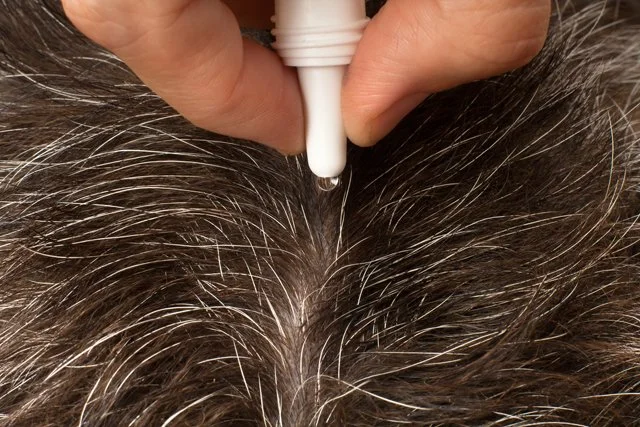Is there a pet parasiticide that is safer for the environment?
Is there a pet parasiticide that is safer for the environment?
Since the discovery that fipronil and imidacloprid (two of the insecticide ingredients in parasiticides for cats and dogs) are contaminants in UK rivers (Perkins et al 2020), it's natural for people to wonder if there is a parasiticide option that might be safer for the environment. First of all, it's important to be clear about how much we actually know about pet parasiticides in general and the environment. The short answer is relatively little.
Fipronil and imidacloprid have been the focus of attention because they are the parasiticides that were looked for in rivers in the recent research project. Agricultural and horticultural uses are other potential sources of these chemicals and more research is needed to find out how much of the contamination derives from their use on pets.
Fipronil and imidacloprid are just two out of more than 20 parasiticide ingredients in parasiticide products for cats and dogs in the UK. Some of these (the topical-acting ones) are applied to the skin as spot-ons or collars from which the insecticide spreads over the body, remains for several weeks or months, and kills insects that come into contact with it on the animal's body surface. Others (systemic-acting) are applied as spot-ons or given as tablets, from which the insecticide is absorbed into the body and kills insects when they take a blood meal from the animal.
How much do we know about the fate of parasiticides after they have done their work?
To date, little attention has been paid to what happens to the active ingredients in medicines after they've left our bodies or those of pets. Regulatory processes for human and pet medicines have not required detailed assessment of the fate of the active ingredients in the environment. There is growing evidence that many do end up in the environment (Prescrire Int 2013; Miller et al 2019) and now research is focusing on how they get there and the effects they might be having on ecosystems.
Topical-acting insecticides leave the pet’s body by being washed or rubbed off into the surroundings (in our homes, onto textiles and into waterways), while the systemic insecticides leave the animal's body either unchanged and/or (to different extents) as metabolites in the faeces and urine. To some people it might seem a better option for the environment to use a systemic-acting insecticide. But we know too little about the fate and environmental effects of all insecticides to be confident that it is the best thing to do.
So, should we just hold on until there is proof that the substances are damaging the environment and we know about the relative effects of different insecticides? No, there are several things that can be done already to mitigate harm. It's not just about the fate and effects of individual parasiticide products, the potential harm is relative to the sum total of parasiticide that is being used. So while researchers help us understand the full effects of parasiticide substances, we should focus on how they are being used.
How to limit harm to the environment now
Like all medicines, parasiticides should be used only when necessary. But what is 'necessary'? ESCCAP UK&Ireland (European Scientific Counsel Companion Animal Parasites) is the only UK veterinary organisation that publishes professional guidelines on parasite protection for cats and dogs. It promotes a sensible risk-based approach, although the guidelines have weaknesses: much of the advice is empirical rather than based on evidence of absolute risk reduction, such as the need for roundworm control in adult cats and dogs in order to protect human health. But the guidelines are the best we have until answers emerge to urgent questions about the absolute risks of parasite disease in pets and humans, and clarity about the role that testing can play in parasite control.
While the information gaps are being filled there are three simple things that can be done now to mitigate harm:
Don't double up on parasiticides. Duplication can happen easily when several combination products are used with the aim of covering all the main parasites (fleas, ticks, roundworm, tapeworm, lungworm). For (a real-life ) example, a Seresto collar (imidacloprid+ flumethrin) and monthly Advocate spot-on (imidacloprid + moxidectin) and monthly Milquantel (milbemycin + praziquantel) used in a dog for comprehensive parasite control. As well as adding more parasiticide to the environment, such polypharmacy increases the risk of adverse effects in the animal. It is possible to get the required parasite coverage from the wide range of prescription and non-prescription products available without doubling up.
Like antibiotics, use the narrowest spectrum drug that will do the job. Some parasiticides (eprinomectin, milbemycin, moxidectin and selamectin) are endectocides, so they have both insecticide and anthelmintic effects. Some are included in products primarily for their insecticide effect, others primarily as wormers. If the pet is already receiving an insecticide, and a wormer is also needed, a simple wormer should be used, instead of an endectocide that might contribute its insecticide effects when it reaches the environment.
Don't over-treat. Not all cats and dogs need year-round flea and tick cover. Many cats and dogs need roundworming only every 3 months, not every month. Many dogs will not need tapeworm cover. The risk-based approach will help avoid over-treatment and unnecessary parasiticide ending up in the environment. This requires a conversation with the pet owner, but is also an opportunity to educate about pet parasites, including those for which no preventive products are available.
Andrea Tarr, Founder and Director, Veterinary Prescriber
References
Drugs in water: incomplete removal by wastewater treatment plants. Prescrire International 2013; 135: 52–4
Miller T et al. Biomonitoring of pesticides, pharmaceuticals and illicit drugs in a freshwater invertebrate to estimate toxic or effect pressure. Environment International 2019; 129: 595–606
Perkins R et al. Potential role of veterinary flea products in widespread pesticide contamination of English rivers. Science of the Total Environment 2020; 755. https://doi.org/10.1016/j.scitotenv. 2020.143560
You might also like to read:
Towards rational use of parasiticides - but how?
Time to think about the evironmental effects of medicines
Environmental effects of pet parasiticides
Drugs in water — incomplete removal by wastewater treatment plants
Parasiticides — who’s advising pet owners?
Is the veterinary profession in the grip of the pharmaceutical industry?
Our purpose...
......is to provide busy veterinary professionals with impartial information on veterinary medicines with which to make treatment decisions in the best interests of animals, their owners and the environment. We mainly do this through the Virtual Veterinary Medicines Academy where our evidence-based peer-reviewed appraisals are the result of a rigorous research and editorial process and are presented succinctly in our multi-media CPD modules. We’re independent: we don’t sell ads, or receive commercial support. We’re funded by subscribers so you can be sure the information we provide is completely objective. Subscribers get unlimited access to the Virtual Veterinary Medicines Academy.

